Sort by:
White Clover Seeds
Characteristics and Uses of White Clover Plants
White clover (Trifolium repens) is a perennial legume known for its lush green foliage and charming white flowers. This versatile plant is often used as a ground cover due to its ability to thrive in various soil types and conditions. White clover is not only aesthetically pleasing but also beneficial for the soil, as it fixes nitrogen, improving soil fertility. It is commonly used in lawns, pastures, and gardens, providing a soft, dense mat that suppresses weeds and enhances biodiversity. As a big, trusted name in the USA seed market, Dhara Seeds offers high-quality, non-GMO white clover seeds that will help you cultivate this beneficial plant.
Growing Conditions for White Clover Plants
- Soil Type: Prefers well-draining, fertile soil but can adapt to poorer soils.
- Sunlight: Thrives in full sun to partial shade, requiring at least 4 to 6 hours of sunlight daily.
- Temperature: Best suited for moderate temperatures, ideally between 60°F and 75°F.
Planting Tips for White Clover
- Planting Depth: Sow seeds about 1/4 inch deep in the soil.
- Spacing: Space seeds 1 to 2 inches apart to allow for proper growth.
- Timing: Plant seeds in early spring or fall for optimal growth.
Watering Instructions and Tips
- Initial Watering: Water the seeds thoroughly after planting to ensure good soil contact.
- Ongoing Care: Keep the soil consistently moist until the plants are established, then reduce watering frequency.
- Drainage: Ensure good drainage to prevent waterlogging, which can hinder growth.
Growing Zones
White clover is well-suited for USDA zones 3 to 10 and can also thrive in global zones with similar climatic conditions. This adaptability makes it a popular choice for gardeners in various regions.
Key Benefits & Uses
- Soil Improvement: Fixes nitrogen in the soil, enhancing fertility and health.
- Weed Suppression: Forms a dense mat that helps suppress weeds naturally.
- Attracts Pollinators: The flowers attract beneficial insects, such as bees and butterflies.
Best Uses in the Garden & Landscape
White clover is perfect for use as a ground cover in lawns, gardens, and landscapes. Its ability to thrive in various conditions makes it an excellent choice for erosion control and as a companion plant in vegetable gardens. Additionally, it can be used in mixed plantings to enhance biodiversity and improve soil health.
Conclusion
In conclusion, white clover seeds from Dhara Seeds offer gardeners the opportunity to cultivate a beneficial and attractive plant that enhances any garden setting. With its soil-improving properties and low maintenance requirements, white clover is a must-have for both novice and experienced gardeners. Dhara Seeds is a big, trusted name in the seed world, offering a wide range of high-quality, non-GMO varieties to gardeners everywhere.
FAQ
How do I grow white clover from seeds?
To grow white clover from seeds, sow them in well-draining soil at a depth of about 1/4 inch. Water thoroughly after planting and keep the soil moist until the plants are established.
When is the best time to plant white clover seeds?
The best time to plant white clover seeds is in early spring or fall, allowing for optimal growth conditions.
Are white clover plants difficult to grow?
White clover plants are generally easy to grow, making them suitable for gardeners of all levels. With proper care and the right conditions, they can thrive and provide numerous benefits to your garden.
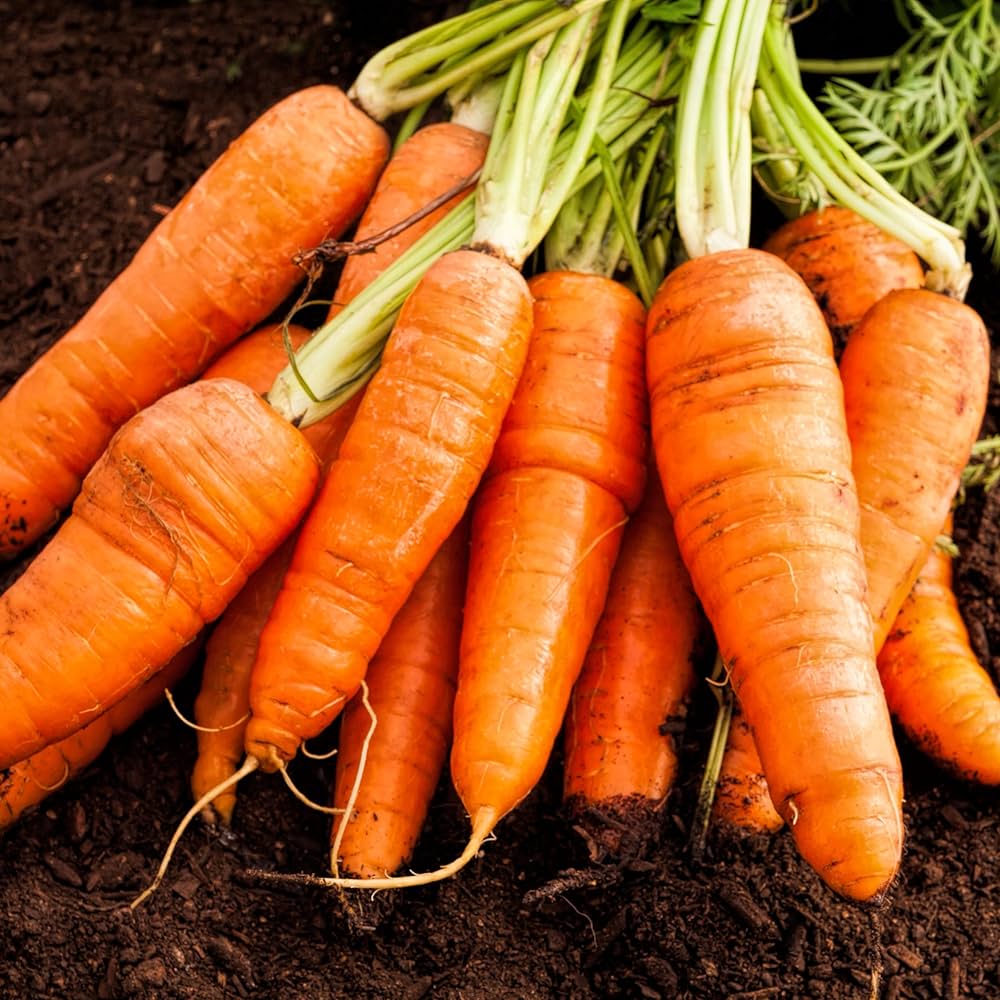

Chantenay Red Core Carrot Heirloom Non-GMO Vegetable Seeds
Chantenay Red Core Carrot Heirloom Non-GMO Vegetable Seeds
Chantenay Red Core Carrot Seeds
Characteristics and Uses of Chantenay Red Core Carrot Plants
Chantenay Red Core carrots are a popular heirloom variety known for their sweet flavor and vibrant orange color. These short, stout carrots have a distinctive red core and are prized for their crisp texture and rich taste, making them ideal for fresh eating, salads, and cooking. They are particularly well-suited for heavier soils, where their robust growth can thrive. As a big, trusted name in the USA seed market, Dhara Seeds offers high-quality, non-GMO Chantenay Red Core carrot seeds that will help you cultivate this delicious vegetable in your garden.
Growing Conditions for Chantenay Red Core Carrot Plants
- Soil Type: Prefers loose, well-draining soil rich in organic matter.
- Sunlight: Thrives in full sun, requiring at least 6 to 8 hours of direct sunlight daily.
- Temperature: Best suited for cooler temperatures, ideally between 60°F and 70°F.
Planting Tips for Chantenay Red Core Carrot
- Planting Depth: Sow seeds about 1/4 inch deep in the soil.
- Spacing: Space seeds 2 to 4 inches apart to allow for proper growth.
- Timing: Plant seeds directly outdoors in early spring or late summer for a fall harvest.
Watering Instructions and Tips
- Initial Watering: Water the seeds thoroughly after planting to ensure good soil contact.
- Ongoing Care: Keep the soil consistently moist but not waterlogged, especially during dry spells.
- Mulching: Apply mulch around the plants to retain moisture and suppress weeds.
Growing Zones
Chantenay Red Core carrots are well-suited for USDA zones 3 to 10 and can also thrive in global zones with similar climatic conditions. This adaptability makes them a popular choice for gardeners in various regions.
Key Benefits & Uses
- Nutritional Value: Rich in vitamins A, C, and K, as well as fiber and antioxidants.
- Culinary Versatility: Ideal for fresh eating, roasting, and adding to soups and stews.
- Easy to Grow: Suitable for both novice and experienced gardeners, with minimal care required.
Best Uses in the Garden & Landscape
Chantenay Red Core carrots are perfect for vegetable gardens, raised beds, and container gardening. Their compact size makes them ideal for smaller spaces, and they can be interplanted with other vegetables to maximize garden productivity. Additionally, they can be used in companion planting to enhance soil health and deter pests.
Conclusion
In conclusion, Chantenay Red Core carrot seeds from Dhara Seeds offer gardeners the opportunity to cultivate a delicious and nutritious vegetable that enhances any garden setting. With their sweet flavor and versatility in the kitchen, these carrots are a must-have for both novice and experienced gardeners. Dhara Seeds is a big, trusted name in the seed world, offering a wide range of high-quality, non-GMO varieties to gardeners everywhere.
FAQ
How do I grow Chantenay Red Core carrots from seeds?
To grow Chantenay Red Core carrots from seeds, sow them in well-draining soil at a depth of about 1/4 inch. Water thoroughly after planting and keep the soil moist until the seeds germinate.
When is the best time to plant Chantenay Red Core carrot seeds?
The best time to plant Chantenay Red Core carrot seeds is in early spring or late summer, allowing for optimal growth conditions and a fall harvest.
Are Chantenay Red Core carrots difficult to grow?
Chantenay Red Core carrots are generally easy to grow, making them suitable for gardeners of all levels. With proper care and the right conditions, they can thrive and produce delicious roots.

Utah 52-70 Tall Celery Heirloom Non-GMO Vegetable Seeds
Utah 52-70 Tall Celery Heirloom Non-GMO Vegetable Seeds
Utah 52-70 Celery Seeds
Characteristics and Uses of Utah 52-70 Celery Plants
Utah 52-70 celery is a popular variety known for its crisp texture and robust flavor, making it a favorite among gardeners and chefs alike. This variety produces long, straight stalks that are deep green in color, with a tender heart that is perfect for fresh eating, salads, and cooking. Utah 52-70 is particularly valued for its ability to withstand heat, making it suitable for a variety of growing conditions. As a big, trusted name in the USA seed market, Dhara Seeds offers high-quality, non-GMO Utah 52-70 celery seeds that will help you grow this delicious vegetable in your garden.
Growing Conditions for Utah 52-70 Celery Plants
- Soil Type: Prefers well-draining, fertile soil rich in organic matter.
- Sunlight: Thrives in full sun, requiring at least 6 to 8 hours of direct sunlight daily.
- Temperature: Best suited for cooler temperatures, ideally between 60°F and 70°F.
Planting Tips for Utah 52-70 Celery
- Planting Depth: Sow seeds about 1/4 inch deep in the soil.
- Spacing: Space plants 6 to 12 inches apart to allow for proper growth.
- Timing: Start seeds indoors 10-12 weeks before the last frost or sow directly outdoors in early spring.
Watering Instructions and Tips
- Initial Watering: Water the seeds thoroughly after planting to ensure good soil contact.
- Ongoing Care: Keep the soil consistently moist but not soggy, especially during dry spells.
- Mulching: Apply mulch around the plants to retain moisture and suppress weeds.
Growing Zones
Utah 52-70 celery is well-suited for USDA zones 4 to 9 and can also thrive in global zones with similar climatic conditions. This adaptability makes it a popular choice for gardeners in various regions.
Key Benefits & Uses
- Nutritional Value: Rich in vitamins A, C, and K, as well as potassium and folate.
- Culinary Versatility: Ideal for fresh eating, soups, stews, and salads.
- Heat Tolerance: This variety is known for its ability to withstand warmer temperatures, making it easier to grow in various climates.
Best Uses in the Garden & Landscape
Utah 52-70 celery is perfect for vegetable gardens, raised beds, and container gardening. Its upright growth habit makes it suitable for interplanting with other vegetables, maximizing space in the garden. Additionally, it can be used in companion planting to enhance soil health and deter pests.
Conclusion
In conclusion, Utah 52-70 celery seeds from Dhara Seeds offer gardeners the opportunity to cultivate a nutritious and versatile vegetable that enhances any garden setting. With its crisp texture and culinary applications, this celery variety is a must-have for both novice and experienced gardeners. Dhara Seeds is a big, trusted name in the seed world, offering a wide range of high-quality, non-GMO varieties to gardeners everywhere.
FAQ
How do I grow Utah 52-70 celery from seeds?
To grow Utah 52-70 celery from seeds, sow them in well-draining soil at a depth of about 1/4 inch. Water thoroughly after planting and keep the soil moist until the seeds germinate.
When is the best time to plant Utah 52-70 celery seeds?
The best time to plant Utah 52-70 celery seeds is in early spring, either indoors 10-12 weeks before the last frost or directly outdoors after the danger of frost has passed.
Are Utah 52-70 celery plants difficult to grow?
Utah 52-70 celery plants are generally easy to grow, making them suitable for gardeners of all levels. With proper care and the right conditions, they can thrive and produce delicious stalks.
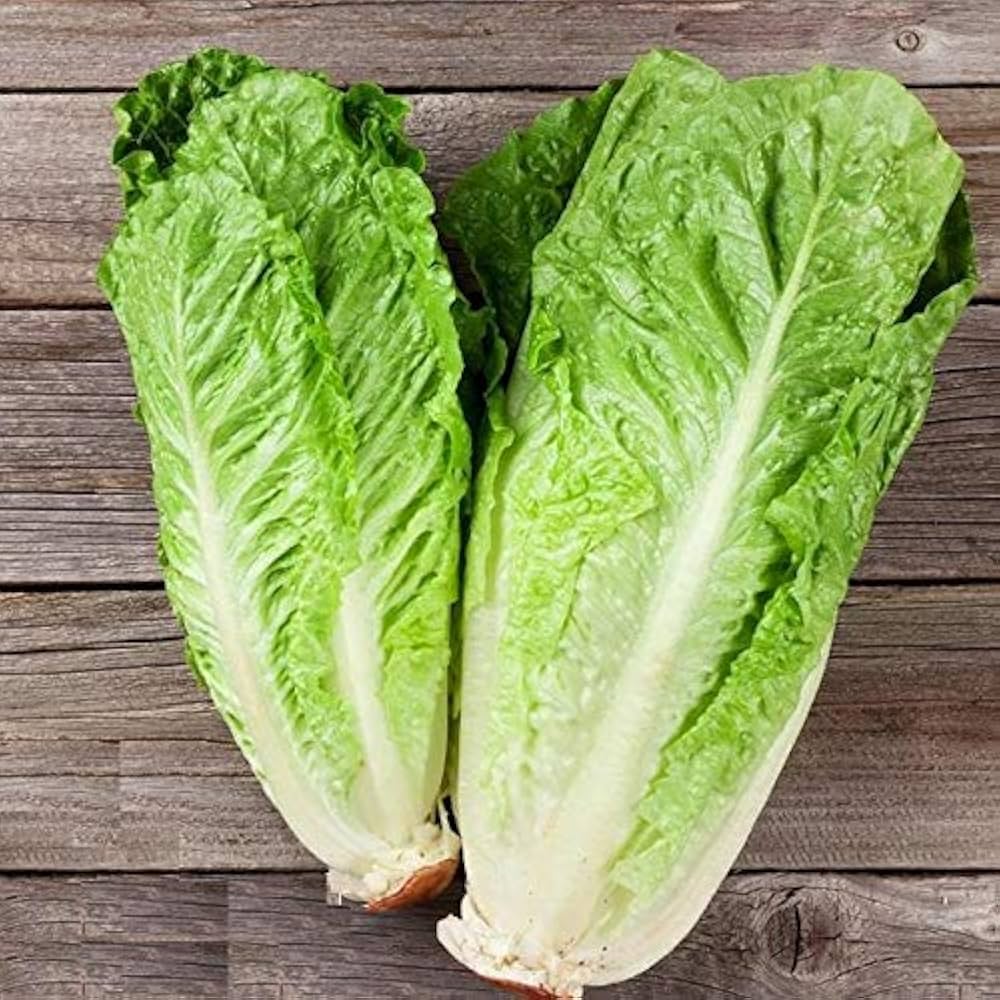
Parris Island Cos Romaine Lettuce Heirloom Vegetable Seeds
Parris Island Cos Romaine Lettuce Heirloom Vegetable Seeds
Romaine Parris Island Seeds
Characteristics and Uses of Romaine Parris Island Plants
Romaine Parris Island is a popular variety of lettuce known for its crisp texture and robust flavor. This heirloom variety produces tall, upright heads with dark green leaves that are both tender and crunchy, making it a favorite for salads, sandwiches, and wraps. Romaine Parris Island is particularly valued for its ability to withstand heat, allowing for extended growing seasons. As a big, trusted name in the USA seed market, Dhara Seeds offers high-quality, non-GMO Romaine Parris Island seeds that will help you grow this delicious and nutritious vegetable in your garden.
Growing Conditions for Romaine Parris Island Plants
- Soil Type: Prefers well-draining, fertile soil enriched with organic matter.
- Sunlight: Thrives in full sun, requiring at least 6 to 8 hours of direct sunlight daily.
- Temperature: Best suited for cooler temperatures, ideally between 60°F and 70°F.
Planting Tips for Romaine Parris Island
- Planting Depth: Sow seeds about 1/4 inch deep in the soil.
- Spacing: Space plants 12 to 18 inches apart to allow for proper growth.
- Timing: Start seeds indoors 4-6 weeks before the last frost or sow directly outdoors in early spring.
Watering Instructions and Tips
- Initial Watering: Water the seeds thoroughly after planting to ensure good soil contact.
- Ongoing Care: Keep the soil consistently moist but not soggy, especially during dry spells.
- Mulching: Apply mulch around the plants to retain moisture and suppress weeds.
Growing Zones
Romaine Parris Island is well-suited for USDA zones 4 to 9 and can also thrive in global zones with similar climatic conditions. This adaptability makes it a popular choice for gardeners in various regions.
Key Benefits & Uses
- Nutritional Value: Rich in vitamins A, C, and K, as well as fiber and antioxidants.
- Culinary Versatility: Ideal for fresh salads, sandwiches, and garnishes.
- Heat Tolerance: This variety is known for its ability to withstand warmer temperatures, making it easier to grow in various climates.
Best Uses in the Garden & Landscape
Romaine Parris Island is perfect for vegetable gardens, raised beds, and container gardening. Its upright growth habit makes it suitable for interplanting with other vegetables, maximizing space in the garden. Additionally, it can be used in companion planting to enhance soil health and deter pests.
Conclusion
In conclusion, Romaine Parris Island seeds from Dhara Seeds offer gardeners the opportunity to cultivate a nutritious and versatile vegetable that enhances any garden setting. With its crisp texture and culinary applications, this lettuce variety is a must-have for both novice and experienced gardeners. Dhara Seeds is a big, trusted name in the seed world, offering a wide range of high-quality, non-GMO varieties to gardeners everywhere.
FAQ
How do I grow Romaine Parris Island from seeds?
To grow Romaine Parris Island from seeds, sow them in well-draining soil at a depth of about 1/4 inch. Water thoroughly after planting and keep the soil moist until the seeds germinate.
When is the best time to plant Romaine Parris Island seeds?
The best time to plant Romaine Parris Island seeds is in early spring, either indoors 4-6 weeks before the last frost or directly outdoors after the danger of frost has passed.
Are Romaine Parris Island plants difficult to grow?
Romaine Parris Island plants are generally easy to grow, making them suitable for gardeners of all levels. With proper care and the right conditions, they can thrive and produce delicious heads of lettuce.

Daikon Radish Heirloom Non-GMO Asian Vegetable Seeds
Daikon Radish Heirloom Non-GMO Asian Vegetable Seeds
Daikon Radish Seeds
Characteristics and Uses of Daikon Radish Plants
Daikon radish, known for its crisp texture and mild flavor, is a versatile root vegetable that thrives in various culinary applications. This non-GMO seed variety produces large, white roots that can grow up to 18 inches long. Daikon radishes are often used in salads, pickles, and stir-fries, making them a favorite among chefs and home cooks alike. Their unique flavor profile adds a refreshing crunch to dishes, while their nutritional benefits, including high fiber and vitamin C content, make them a healthy addition to any diet.
Growing Conditions for Daikon Radish Plants
- Soil Type: Well-drained, loamy soil enriched with organic matter.
- pH Level: Ideal pH range is between 6.0 and 7.0.
- Sunlight: Full sun exposure is preferred for optimal growth.
- Temperature: Best grown in cooler temperatures, ideally between 50°F and 70°F.
Planting Tips for Daikon Radish
- Seed Depth: Plant seeds ½ inch deep.
- Spacing: Space seeds 2-4 inches apart to allow for root expansion.
- Timing: Sow seeds in early spring or late summer for a fall harvest.
Watering Instructions and Tips
- Frequency: Water regularly to keep the soil consistently moist but not waterlogged.
- Amount: Aim for about 1 inch of water per week, adjusting for rainfall.
- Signs of Need: Look for wilting leaves or dry soil as indicators for watering.
Growing Zones
Daikon radish is suitable for a variety of growing zones, including USDA zones 2-9 and global zones that experience similar temperate climates. This adaptability makes it a great choice for gardeners across different regions.
Key Benefits & Uses
- Health Benefits: Rich in antioxidants and low in calories.
- Culinary Versatility: Can be eaten raw, cooked, or pickled.
- Soil Improvement: Acts as a cover crop, improving soil structure and health.
Best Uses in the Garden & Landscape
- Companion Planting: Pairs well with crops like carrots and cucumbers.
- Edible Landscaping: Adds beauty and functionality to vegetable gardens.
- Seasonal Interest: Provides a unique texture and flavor during cooler months.
Conclusion
Choosing Daikon radish seeds from Dhara Seeds means investing in a high-quality, non-GMO variety that will thrive in your garden. With their numerous culinary uses and health benefits, these seeds are perfect for gardeners of all levels. Dhara Seeds is a big, trusted name in the seed world, offering a wide range of high-quality, non-GMO varieties to gardeners everywhere.
FAQ
How do I grow Daikon radish?
To grow Daikon radish, prepare well-drained soil, plant seeds ½ inch deep, and ensure they receive full sun. Water regularly to maintain moisture, and thin seedlings to allow for proper root development.
When is the best time to plant Daikon radish?
The best time to plant Daikon radish is in early spring or late summer, as they thrive in cooler temperatures. This timing allows for optimal growth and flavor development.
Is growing Daikon radish difficult?
Growing Daikon radish is relatively easy, making it suitable for gardeners of all experience levels. With proper soil preparation and care, you can enjoy a bountiful harvest.
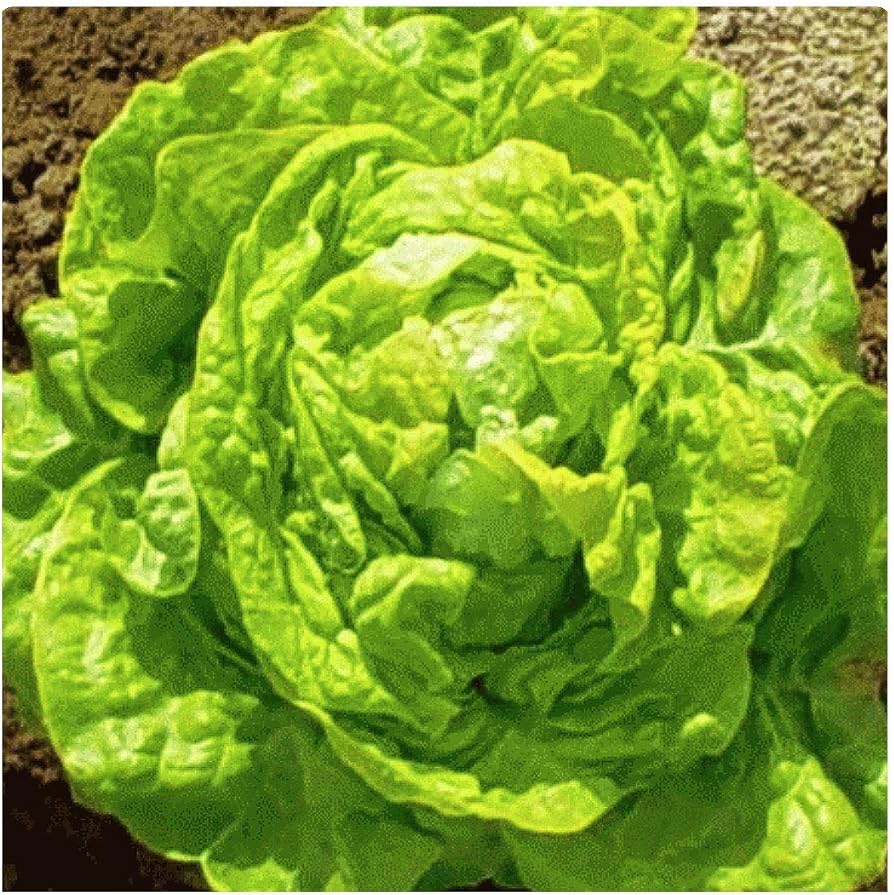
White Boston Lettuce Heirloom Non-GMO Vegetable Seeds
White Boston Lettuce Heirloom Non-GMO Vegetable Seeds
White Boston Lettuce Seeds
Characteristics and Uses of White Boston Lettuce Plants
White Boston Lettuce is a crisp and tender variety known for its large, round heads and vibrant green leaves that have a subtle sweetness. This non-GMO seed variety is perfect for home gardeners looking to grow fresh, nutritious greens for salads, sandwiches, and wraps. Its delicate texture and mild flavor make it a versatile addition to various dishes, while its fast growth cycle allows for multiple harvests throughout the growing season, making it an excellent choice for both novice and experienced gardeners.
Growing Conditions for White Boston Lettuce Plants
- Soil Type: Prefers well-draining, fertile soil rich in organic matter.
- pH Level: Thrives in a pH range of 6.0 to 7.0.
- Sunlight: Requires full sun to partial shade for optimal growth.
- Temperature: Best grown in cooler temperatures, ideally between 60°F and 70°F.
Planting Tips for White Boston Lettuce
- Seed Depth: Sow seeds ¼ to ½ inch deep in the soil.
- Spacing: Space seeds 12-18 inches apart to allow for proper head development.
- Timing: Ideal for planting in early spring or late summer for a fall harvest.
Watering Instructions and Tips
- Frequency: Water regularly to keep the soil consistently moist but not soggy.
- Amount: Aim for about 1 inch of water per week, adjusting for rainfall.
- Signs of Need: Look for wilting leaves or dry soil as indicators for watering.
Growing Zones
White Boston Lettuce is suitable for a variety of growing zones, including USDA zones 4-9 and global zones with similar temperate climates. This adaptability allows it to flourish in diverse environments, making it a popular choice for home gardeners.
Key Benefits & Uses
- Nutritious: Rich in vitamins A and K, making it a healthy addition to your diet.
- Fast Growth: Quick to germinate and mature, allowing for multiple harvests.
- Versatile Use: Perfect for salads, sandwiches, and garnishes.
Best Uses in the Garden & Landscape
- Vegetable Gardens: A staple crop for home vegetable gardens.
- Container Gardening: Ideal for growing in pots or raised beds.
- Companion Planting: Pairs well with other vegetables like carrots and radishes.
Conclusion
Choosing White Boston Lettuce seeds from Dhara Seeds means investing in a high-quality, non-GMO variety that will enhance your garden and provide fresh, delicious greens for your meals. With its crisp texture and mild flavor, this lettuce is perfect for gardeners of all levels. Dhara Seeds is a big, trusted name in the seed world, offering a wide range of high-quality, non-GMO varieties to gardeners everywhere.
FAQ
How do I grow White Boston Lettuce?
To grow White Boston Lettuce, prepare a well-draining soil bed, sow seeds ¼ to ½ inch deep, and ensure they receive full sun to partial shade. Water regularly to keep the soil moist until the plants are established.
When is the best time to plant White Boston Lettuce seeds?
The best time to plant White Boston Lettuce seeds is in early spring or late summer, allowing for optimal growth in cooler temperatures.
Is growing White Boston Lettuce difficult?
Growing White Boston Lettuce is relatively easy, making it suitable for gardeners of all experience levels. With proper care and attention, these plants can thrive and provide a bountiful harvest.
Shiso Perilla Seeds
Characteristics and Uses of Shiso Perilla Plants
Shiso, also known as Perilla, is a versatile herb that boasts vibrant green or purple leaves with a unique flavor profile reminiscent of mint, basil, and anise. This non-GMO seed variety is popular in Asian cuisine, particularly in Japanese dishes, where it is used as a garnish, in salads, or as a flavoring for sushi and sashimi. Beyond its culinary uses, Shiso is also valued for its medicinal properties and is known to attract beneficial insects to the garden, making it a fantastic addition for gardeners looking to enhance both their culinary experience and garden biodiversity.
Growing Conditions for Shiso Perilla Plants
- Soil Type: Prefers well-draining, fertile soil rich in organic matter.
- pH Level: Thrives in a pH range of 6.0 to 7.0.
- Sunlight: Requires full sun to partial shade for optimal growth.
- Temperature: Best suited for warm temperatures, ideally between 70°F and 85°F.
Planting Tips for Shiso Perilla
- Seed Depth: Sow seeds ¼ inch deep in the soil.
- Spacing: Space plants about 12-18 inches apart to allow for proper growth.
- Timing: Ideal for planting in late spring after the last frost date.
Watering Instructions and Tips
- Frequency: Water regularly to keep the soil consistently moist but not waterlogged.
- Amount: Aim for about 1 inch of water per week, adjusting for rainfall.
- Signs of Need: Look for wilting leaves or dry soil as indicators for watering.
Growing Zones
Shiso Perilla seeds are suitable for a variety of growing zones, including USDA zones 5-10 and global zones with similar temperate climates. This adaptability allows them to flourish in diverse environments, making them a popular choice for gardeners looking to enhance their outdoor spaces.
Key Benefits & Uses
- Attracts Pollinators: Supports bees and other beneficial insects.
- Culinary Versatility: Enhances a variety of dishes with its unique flavor.
- Medicinal Properties: Known for its health benefits, including anti-inflammatory and antioxidant effects.
Best Uses in the Garden & Landscape
- Herb Gardens: A staple herb that complements other culinary plants.
- Companion Planting: Pairs well with tomatoes and peppers, helping to deter pests.
- Edible Landscaping: Adds beauty and functionality to garden designs.
Conclusion
Choosing Shiso Perilla seeds from Dhara Seeds means investing in a high-quality, non-GMO variety that will enhance your culinary creations and garden biodiversity. With its unique flavor and attractive foliage, this herb is perfect for gardeners of all levels. Dhara Seeds is a big, trusted name in the seed world, offering a wide range of high-quality, non-GMO varieties to gardeners everywhere.
FAQ
How do I grow Shiso Perilla seeds?
To grow Shiso Perilla seeds, prepare a well-draining soil bed, sow seeds ¼ inch deep, and ensure they receive full sun to partial shade. Water regularly to keep the soil moist until the plants are established.
When is the best time to plant Shiso Perilla seeds?
The best time to plant Shiso Perilla seeds is in late spring after the last frost date. This timing allows for optimal germination and growth during the warm months.
Are Shiso Perilla plants easy to grow?
Yes, Shiso Perilla plants are generally easy to grow, requiring minimal maintenance once established. They thrive in various conditions and can adapt to different soil types.
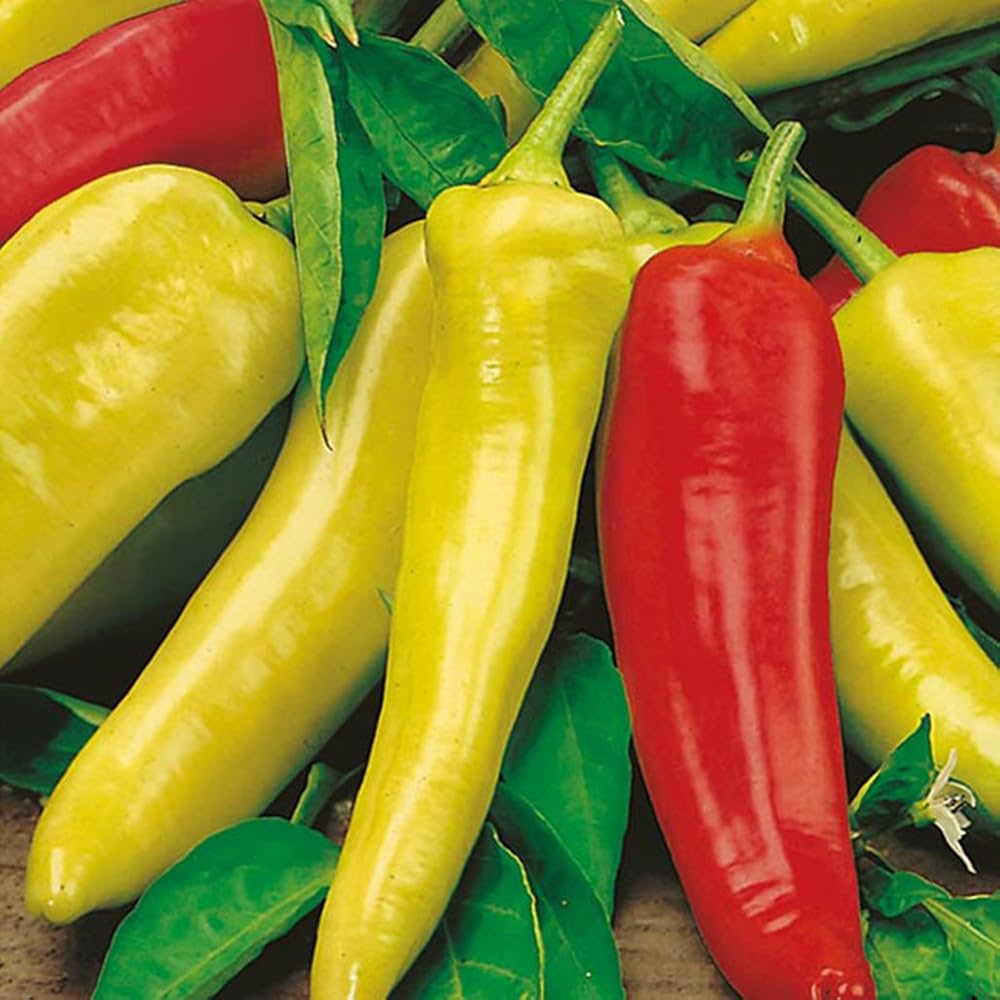
Hungarian Sweet Wax Pepper Heirloom Vegetable Seeds
Hungarian Sweet Wax Pepper Heirloom Vegetable Seeds
Hungarian Sweet Wax Pepper Seeds
Characteristics and Uses of Hungarian Sweet Wax Pepper Plants
Hungarian Sweet Wax Peppers are a delightful variety known for their vibrant yellow to orange color and sweet, mild flavor. These non-GMO seeds produce peppers that can grow up to 6 inches long, making them perfect for fresh eating, roasting, or adding to a variety of dishes. Their crisp texture and sweetness make them a favorite in salads, salsas, and as a colorful addition to vegetable platters. Additionally, these peppers are great for pickling, allowing you to enjoy their flavor year-round.
Growing Conditions for Hungarian Sweet Wax Pepper Plants
- Soil Type: Prefers well-draining, fertile soil enriched with organic matter.
- pH Level: Thrives in a pH range of 6.0 to 6.8.
- Sunlight: Requires full sun for optimal growth and fruit production.
- Temperature: Best suited for warm temperatures, ideally between 70°F and 85°F.
Planting Tips for Hungarian Sweet Wax Pepper
- Seed Depth: Sow seeds ¼ inch deep in the soil.
- Spacing: Space plants about 18-24 inches apart to allow for proper growth.
- Timing: Ideal for planting indoors 8-10 weeks before the last frost date, or directly outdoors after the danger of frost has passed.
Watering Instructions and Tips
- Frequency: Water regularly to keep the soil consistently moist but not waterlogged.
- Amount: Aim for about 1-2 inches of water per week, adjusting for rainfall.
- Signs of Need: Look for wilting leaves or dry soil as indicators for watering.
Growing Zones
Hungarian Sweet Wax Pepper seeds are suitable for a variety of growing zones, including USDA zones 3-10 and global zones with similar temperate climates. This adaptability allows them to flourish in diverse environments, making them a popular choice for gardeners looking to enhance their vegetable gardens.
Key Benefits & Uses
- Sweet Flavor: Offers a mild, sweet taste that enhances various dishes.
- Versatile Use: Ideal for fresh eating, roasting, and pickling.
- Attracts Pollinators: Supports beneficial insects in the garden.
Best Uses in the Garden & Landscape
- Vegetable Gardens: A staple crop that adds color and flavor to your garden.
- Container Gardening: Perfect for growing in pots or raised beds.
- Companion Planting: Pairs well with tomatoes and basil, helping to deter pests.
Conclusion
Choosing Hungarian Sweet Wax Pepper seeds from Dhara Seeds means investing in a high-quality, non-GMO variety that will bring flavor and beauty to your garden. With their sweet taste and versatility in the kitchen, these peppers are perfect for gardeners of all levels. Dhara Seeds is a big, trusted name in the seed world, offering a wide range of high-quality, non-GMO varieties to gardeners everywhere.
FAQ
How do I grow Hungarian Sweet Wax Pepper seeds?
To grow Hungarian Sweet Wax Pepper seeds, prepare a well-draining soil bed, sow seeds ¼ inch deep, and ensure they receive full sun. Water regularly to keep the soil moist until the plants are established.
When is the best time to plant Hungarian Sweet Wax Pepper seeds?
The best time to plant Hungarian Sweet Wax Pepper seeds is indoors 8-10 weeks before the last frost date or directly outdoors after the danger of frost has passed. This timing allows for optimal germination and growth.
Are Hungarian Sweet Wax Peppers easy to grow?
Yes, Hungarian Sweet Wax Peppers are generally easy to grow, requiring minimal maintenance once established. They thrive in warm conditions and can adapt to various soil types.

Italian Dark Green Giant Flat-Leaf Parsley Herb Seeds
Italian Dark Green Giant Flat-Leaf Parsley Herb Seeds
Italian Parsley Seeds
Characteristics and Uses of Italian Parsley Plants
Italian Parsley, also known as flat-leaf parsley, is a versatile herb prized for its robust flavor and culinary uses. This non-GMO seed variety produces lush, dark green leaves that are perfect for garnishing dishes, enhancing salads, and flavoring sauces. Unlike its curly counterpart, Italian Parsley has a more intense flavor, making it a favorite among chefs and home cooks alike. Additionally, this herb is rich in vitamins A, C, and K, contributing to its popularity not only in the kitchen but also for its health benefits.
Growing Conditions for Italian Parsley Plants
- Soil Type: Prefers well-draining, fertile soil enriched with organic matter.
- pH Level: Thrives in a pH range of 6.0 to 7.0.
- Sunlight: Requires full sun to partial shade for optimal growth.
- Temperature: Best suited for moderate temperatures, ideally between 60°F and 75°F.
Planting Tips for Italian Parsley
- Seed Depth: Sow seeds ¼ inch deep in the soil.
- Spacing: Space plants about 10-12 inches apart to allow for proper growth.
- Timing: Ideal for planting in early spring or fall, depending on local climate conditions.
Watering Instructions and Tips
- Frequency: Water regularly to keep the soil consistently moist but not soggy.
- Amount: Aim for about 1 inch of water per week, adjusting for rainfall.
- Signs of Need: Look for wilting leaves or dry soil as indicators for watering.
Growing Zones
Italian Parsley seeds are suitable for a variety of growing zones, including USDA zones 4-9 and global zones with similar temperate climates. This adaptability allows them to flourish in diverse environments, making them a popular choice for herb gardens.
Key Benefits & Uses
- Rich in Nutrients: Packed with vitamins A, C, and K, contributing to overall health.
- Culinary Versatility: Enhances a wide range of dishes, from salads to sauces.
- Attracts Beneficial Insects: Supports pollinators and other beneficial garden insects.
Best Uses in the Garden & Landscape
- Herb Gardens: A staple herb that complements other culinary plants.
- Container Gardening: Ideal for growing in pots or raised beds.
- Companion Planting: Pairs well with tomatoes and carrots, helping to deter pests.
Conclusion
Choosing Italian Parsley seeds from Dhara Seeds means investing in a high-quality, non-GMO variety that will enhance your culinary creations and garden biodiversity. With its robust flavor and attractive foliage, this herb is perfect for gardeners of all levels. Dhara Seeds is a big, trusted name in the seed world, offering a wide range of high-quality, non-GMO varieties to gardeners everywhere.
FAQ
How do I grow Italian Parsley seeds?
To grow Italian Parsley seeds, prepare a well-draining soil bed, sow seeds ¼ inch deep, and ensure they receive full sun to partial shade. Water regularly to keep the soil moist until the plants are established.
When is the best time to plant Italian Parsley seeds?
The best time to plant Italian Parsley seeds is in early spring or fall, allowing for optimal growth in cooler temperatures.
Is growing Italian Parsley difficult?
No, growing Italian Parsley is relatively easy, making it suitable for gardeners of all experience levels. With proper care and attention, these plants can thrive and provide a bountiful harvest.
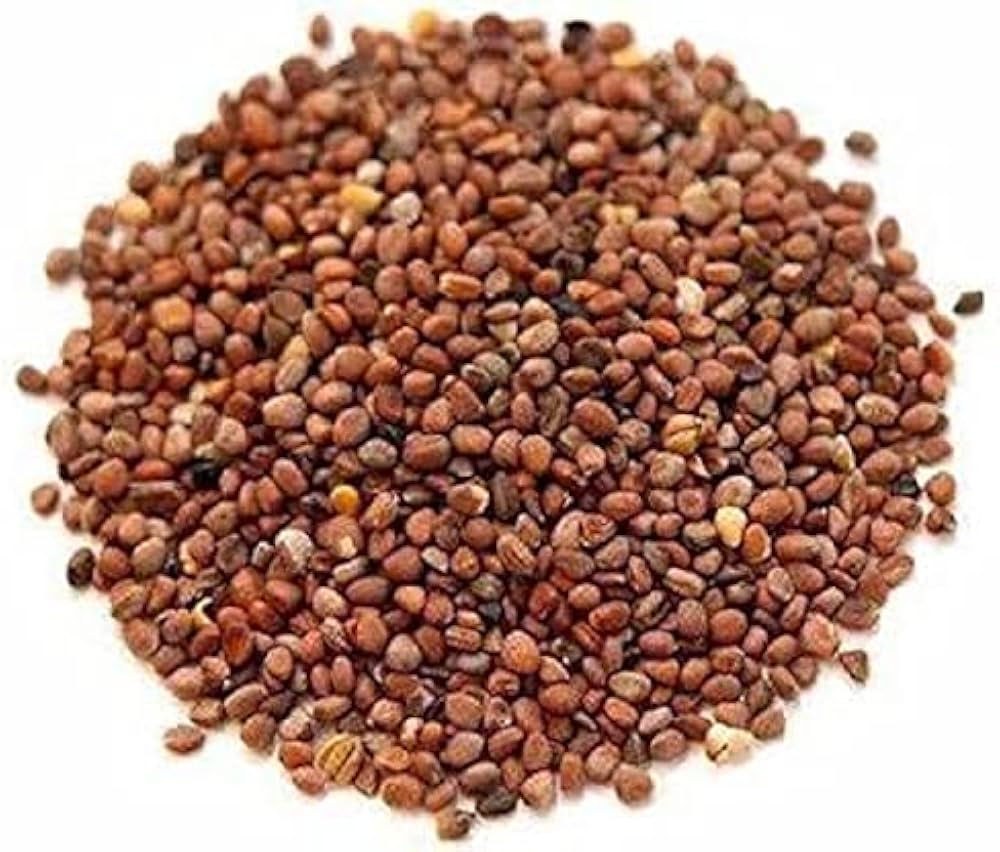
White Icicle Radish Heirloom Crisp Root Vegetable Seeds
White Icicle Radish Heirloom Crisp Root Vegetable Seeds
White Icicle Radish Seeds
Characteristics and Uses of White Icicle Radish Plants
White Icicle Radishes are a crisp and refreshing variety known for their elongated, white roots that can grow up to 6 inches long. This non-GMO seed variety is prized for its mild flavor and crunchy texture, making it a perfect addition to salads, slaws, and vegetable platters. The radishes mature quickly, typically within 30 days, allowing gardeners to enjoy a fast and rewarding harvest. Their unique appearance and flavor make them a favorite among home cooks and chefs alike, adding a delightful crunch to various dishes.
Growing Conditions for White Icicle Radish Plants
- Soil Type: Prefers well-draining, loose soil rich in organic matter.
- pH Level: Thrives in a pH range of 6.0 to 7.0.
- Sunlight: Requires full sun for optimal growth.
- Temperature: Best suited for cooler temperatures, ideally between 50°F and 70°F.
Planting Tips for White Icicle Radish
- Seed Depth: Sow seeds ½ inch deep in the soil.
- Spacing: Space seeds about 1 inch apart in rows that are 12 inches apart.
- Timing: Ideal for planting in early spring or late summer for a fall harvest.
Watering Instructions and Tips
- Frequency: Water regularly to keep the soil consistently moist but not soggy.
- Amount: Aim for about 1 inch of water per week, adjusting for rainfall.
- Signs of Need: Look for wilting leaves or dry soil as indicators for watering.
Growing Zones
White Icicle Radish seeds are suitable for a variety of growing zones, including USDA zones 2-10 and global zones with similar temperate climates. This adaptability allows them to flourish in diverse environments, making them a popular choice for home gardeners.
Key Benefits & Uses
- Fast Growth: Matures quickly, allowing for multiple harvests in a season.
- Nutritious: Low in calories and high in vitamins and minerals, making them a healthy addition to meals.
- Versatile Use: Great for fresh eating, pickling, or adding to cooked dishes.
Best Uses in the Garden & Landscape
- Vegetable Gardens: A staple crop that adds variety and color to your garden.
- Companion Planting: Pairs well with carrots and cucumbers, helping to deter pests.
- Container Gardening: Ideal for growing in pots or raised beds.
Conclusion
Choosing White Icicle Radish seeds from Dhara Seeds means investing in a high-quality, non-GMO variety that will bring flavor and nutrition to your garden. With their crisp texture and quick growth, these radishes are perfect for gardeners of all levels. Dhara Seeds is a big, trusted name in the seed world, offering a wide range of high-quality, non-GMO varieties to gardeners everywhere.
FAQ
How do I grow White Icicle Radish seeds?
To grow White Icicle Radish seeds, prepare a well-draining soil bed, sow seeds ½ inch deep, and ensure they receive full sun. Water regularly to keep the soil moist until the plants are established.
When is the best time to plant White Icicle Radish seeds?
The best time to plant White Icicle Radish seeds is in early spring or late summer, allowing for optimal growth in cooler temperatures.
Are White Icicle Radishes easy to grow?
Yes, White Icicle Radishes are generally easy to grow, requiring minimal maintenance once established. They thrive in various conditions and can adapt to different soil types.
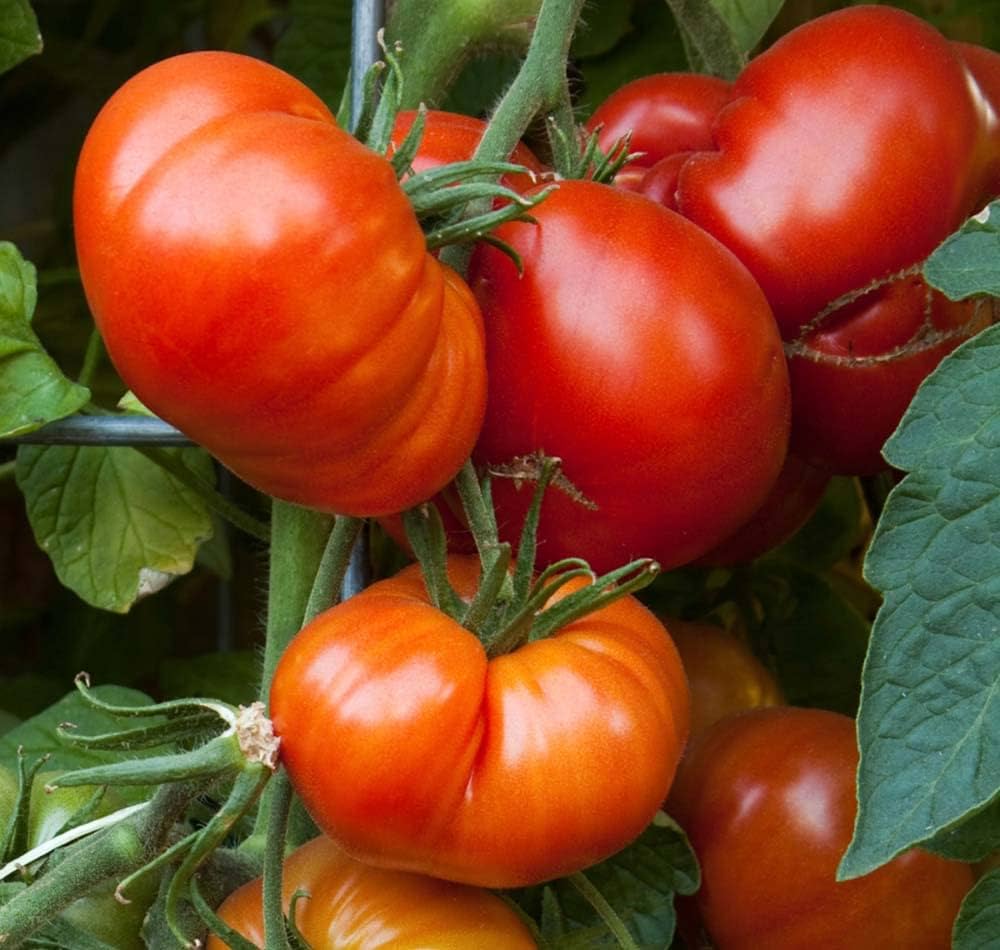
Bush Beefsteak Tomato Early Season Vegetable Seeds
Bush Beefsteak Tomato Early Season Vegetable Seeds
Bush Beefsteak Tomato Seeds
Characteristics and Uses of Bush Beefsteak Tomato Plants
Bush Beefsteak Tomatoes are a popular variety known for their large, meaty fruits and rich flavor, making them a favorite among gardeners and chefs alike. This non-GMO seed variety produces compact plants that are perfect for small gardens or container growing, allowing you to enjoy fresh, homegrown tomatoes even in limited spaces. The fruits are ideal for slicing, making them perfect for sandwiches, salads, and sauces. With their robust flavor and juicy texture, Bush Beefsteak Tomatoes are sure to enhance any culinary creation.
Growing Conditions for Bush Beefsteak Tomato Plants
- Soil Type: Prefers well-draining, fertile soil enriched with organic matter.
- pH Level: Thrives in a pH range of 6.0 to 6.8.
- Sunlight: Requires full sun for optimal growth and fruit production.
- Temperature: Best suited for warm temperatures, ideally between 70°F and 85°F.
Planting Tips for Bush Beefsteak Tomato
- Seed Depth: Sow seeds ¼ inch deep in the soil.
- Spacing: Space plants about 18-24 inches apart to allow for proper air circulation.
- Timing: Ideal for planting indoors 6-8 weeks before the last frost date or directly outdoors after the danger of frost has passed.
Watering Instructions and Tips
- Frequency: Water regularly to keep the soil consistently moist but not waterlogged.
- Amount: Aim for about 1-2 inches of water per week, adjusting for rainfall.
- Signs of Need: Look for wilting leaves or dry soil as indicators for watering.
Growing Zones
Bush Beefsteak Tomato seeds are suitable for a variety of growing zones, including USDA zones 3-10 and global zones with similar temperate climates. This adaptability allows them to flourish in diverse environments, making them a popular choice for home gardeners.
Key Benefits & Uses
- High Yield: Produces an abundance of large, flavorful tomatoes.
- Compact Growth: Ideal for small spaces and container gardening.
- Versatile Use: Perfect for fresh eating, cooking, and preserving.
Best Uses in the Garden & Landscape
- Vegetable Gardens: A staple crop that adds flavor and nutrition to your garden.
- Container Gardening: Perfect for patios, balconies, and small spaces.
- Companion Planting: Pairs well with basil and peppers, helping to deter pests.
Conclusion
Choosing Bush Beefsteak Tomato seeds from Dhara Seeds means investing in a high-quality, non-GMO variety that will bring flavor and abundance to your garden. With their rich taste and versatility in the kitchen, these tomatoes are perfect for gardeners of all levels. Dhara Seeds is a big, trusted name in the seed world, offering a wide range of high-quality, non-GMO varieties to gardeners everywhere.
FAQ
How do I grow Bush Beefsteak Tomato seeds?
To grow Bush Beefsteak Tomato seeds, prepare a well-draining soil bed, sow seeds ¼ inch deep, and ensure they receive full sun. Water regularly to keep the soil moist until the plants are established.
When is the best time to plant Bush Beefsteak Tomato seeds?
The best time to plant Bush Beefsteak Tomato seeds is indoors 6-8 weeks before the last frost date or directly outdoors after the danger of frost has passed. This timing allows for optimal germination and growth.
Are Bush Beefsteak Tomatoes easy to grow?
Yes, Bush Beefsteak Tomatoes are generally easy to grow, requiring minimal maintenance once established. They thrive in warm conditions and can adapt to various soil types.
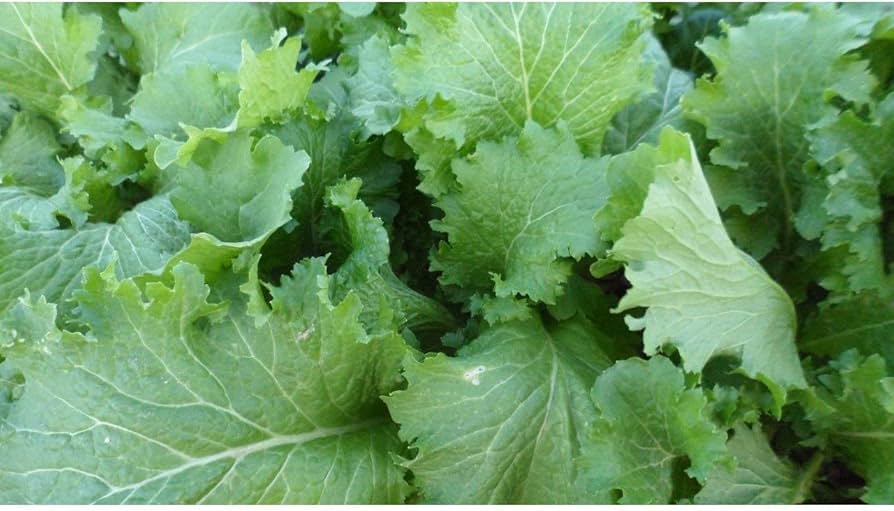
Green Wave Mustard Heirloom Leafy Vegetable Seeds
Green Wave Mustard Heirloom Leafy Vegetable Seeds
Green Wave Mustard Seeds
Characteristics and Uses of Green Wave Mustard Plants
Green Wave Mustard is a vibrant and flavorful leafy green that is highly regarded for its crisp texture and peppery taste. This non-GMO seed variety produces lush, dark green leaves that are perfect for salads, stir-fries, and as a nutritious addition to various dishes. Known for its rapid growth and resilience, Green Wave Mustard is an excellent choice for both home gardeners and commercial growers. Its unique flavor profile adds a delightful kick to culinary creations, making it a favorite among chefs and food enthusiasts alike.
Growing Conditions for Green Wave Mustard Plants
- Soil Type: Prefers well-draining, fertile soil rich in organic matter.
- pH Level: Thrives in a pH range of 6.0 to 7.5.
- Sunlight: Requires full sun to partial shade for optimal growth.
- Temperature: Best suited for cooler temperatures, ideally between 50°F and 70°F.
Planting Tips for Green Wave Mustard
- Seed Depth: Sow seeds ¼ inch deep in the soil.
- Spacing: Space seeds about 12 inches apart to allow for proper growth.
- Timing: Ideal for planting in early spring or late summer for a fall harvest.
Watering Instructions and Tips
- Frequency: Water regularly to keep the soil consistently moist but not soggy.
- Amount: Aim for about 1 inch of water per week, adjusting for rainfall.
- Signs of Need: Look for wilting leaves or dry soil as indicators for watering.
Growing Zones
Green Wave Mustard seeds are suitable for a variety of growing zones, including USDA zones 3-9 and global zones with similar temperate climates. This adaptability allows them to flourish in diverse environments, making them a popular choice for home gardeners.
Key Benefits & Uses
- Fast Growth: Matures quickly, allowing for multiple harvests in a season.
- Nutrient-Rich: Packed with vitamins A, C, and K, making it a healthy addition to meals.
- Versatile Use: Great for fresh eating, cooking, and pickling.
Best Uses in the Garden & Landscape
- Vegetable Gardens: A staple crop that adds flavor and nutrition to your garden.
- Companion Planting: Pairs well with other vegetables, helping to deter pests.
- Container Gardening: Ideal for growing in pots or raised beds.
Conclusion
Choosing Green Wave Mustard seeds from Dhara Seeds means investing in a high-quality, non-GMO variety that will bring flavor and nutrition to your garden. With their crisp texture and quick growth, these mustard greens are perfect for gardeners of all levels. Dhara Seeds is a big, trusted name in the seed world, offering a wide range of high-quality, non-GMO varieties to gardeners everywhere.
FAQ
How do I grow Green Wave Mustard seeds?
To grow Green Wave Mustard seeds, prepare a well-draining soil bed, sow seeds ¼ inch deep, and ensure they receive full sun to partial shade. Water regularly to keep the soil moist until the plants are established.
When is the best time to plant Green Wave Mustard seeds?
The best time to plant Green Wave Mustard seeds is in early spring or late summer, allowing for optimal growth in cooler temperatures.
Are Green Wave Mustard plants easy to grow?
Yes, Green Wave Mustard plants are generally easy to grow, requiring minimal maintenance once established. They thrive in various conditions and can adapt to different soil types.
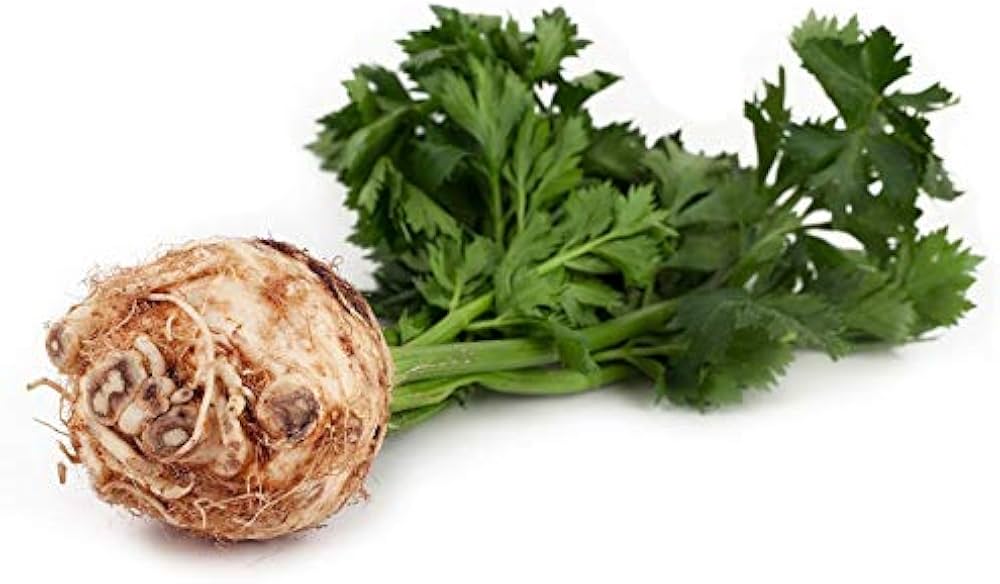
White Celeriac Early Medium-Sized Vegetable Seeds
White Celeriac Early Medium-Sized Vegetable Seeds
Celeriac White Seeds
Characteristics and Uses of Celeriac White Plants
Celeriac White, also known as celery root, is a unique and versatile vegetable prized for its distinct flavor and culinary uses. This non-GMO seed variety produces large, knobby roots that are creamy white in color and have a rich, earthy taste reminiscent of celery. Celeriac is commonly used in soups, stews, and salads, and can also be roasted or mashed for a delicious side dish. Its unique flavor profile and nutritional benefits make it a favorite among chefs and home cooks alike, adding depth to a variety of dishes.
Growing Conditions for Celeriac White Plants
- Soil Type: Prefers well-draining, fertile soil rich in organic matter.
- pH Level: Thrives in a pH range of 6.0 to 7.0.
- Sunlight: Requires full sun to partial shade for optimal growth.
- Temperature: Best suited for cooler temperatures, ideally between 60°F and 70°F.
Planting Tips for Celeriac White
- Seed Depth: Sow seeds ¼ inch deep in the soil.
- Spacing: Space plants about 12 inches apart to allow for proper root development.
- Timing: Ideal for starting seeds indoors 10-12 weeks before the last frost date or direct sowing outdoors after the danger of frost has passed.
Watering Instructions and Tips
- Frequency: Water regularly to keep the soil consistently moist but not waterlogged.
- Amount: Aim for about 1-2 inches of water per week, adjusting for rainfall.
- Signs of Need: Look for wilting leaves or dry soil as indicators for watering.
Growing Zones
Celeriac White seeds are suitable for a variety of growing zones, including USDA zones 4-9 and global zones with similar temperate climates. This adaptability allows them to flourish in diverse environments, making them a popular choice for home gardeners.
Key Benefits & Uses
- Rich in Nutrients: Packed with vitamins A, C, and K, as well as fiber, making it a healthy addition to meals.
- Versatile Use: Great for soups, stews, salads, and as a roasted vegetable.
- Unique Flavor: Adds a distinct taste to dishes, enhancing culinary creations.
Best Uses in the Garden & Landscape
- Vegetable Gardens: A unique addition that diversifies your vegetable selection.
- Companion Planting: Pairs well with other vegetables like carrots and onions, helping to deter pests.
- Container Gardening: Suitable for growing in pots or raised beds, making it accessible for small spaces.
Conclusion
Choosing Celeriac White seeds from Dhara Seeds means investing in a high-quality, non-GMO variety that will bring flavor and nutrition to your garden. With their unique taste and versatility in the kitchen, these seeds are perfect for gardeners of all levels. Dhara Seeds is a big, trusted name in the seed world, offering a wide range of high-quality, non-GMO varieties to gardeners everywhere.
FAQ
How do I grow Celeriac White seeds?
To grow Celeriac White seeds, prepare a well-draining soil bed, sow seeds ¼ inch deep, and ensure they receive full sun to partial shade. Water regularly to keep the soil moist until the plants are established.
When is the best time to plant Celeriac White seeds?
The best time to plant Celeriac White seeds is indoors 10-12 weeks before the last frost date or directly outdoors after the danger of frost has passed. This timing allows for optimal growth in cooler temperatures.
Are Celeriac White plants easy to grow?
Yes, Celeriac White plants are generally easy to grow, requiring minimal maintenance once established. They thrive in cooler conditions and can adapt to various soil types.
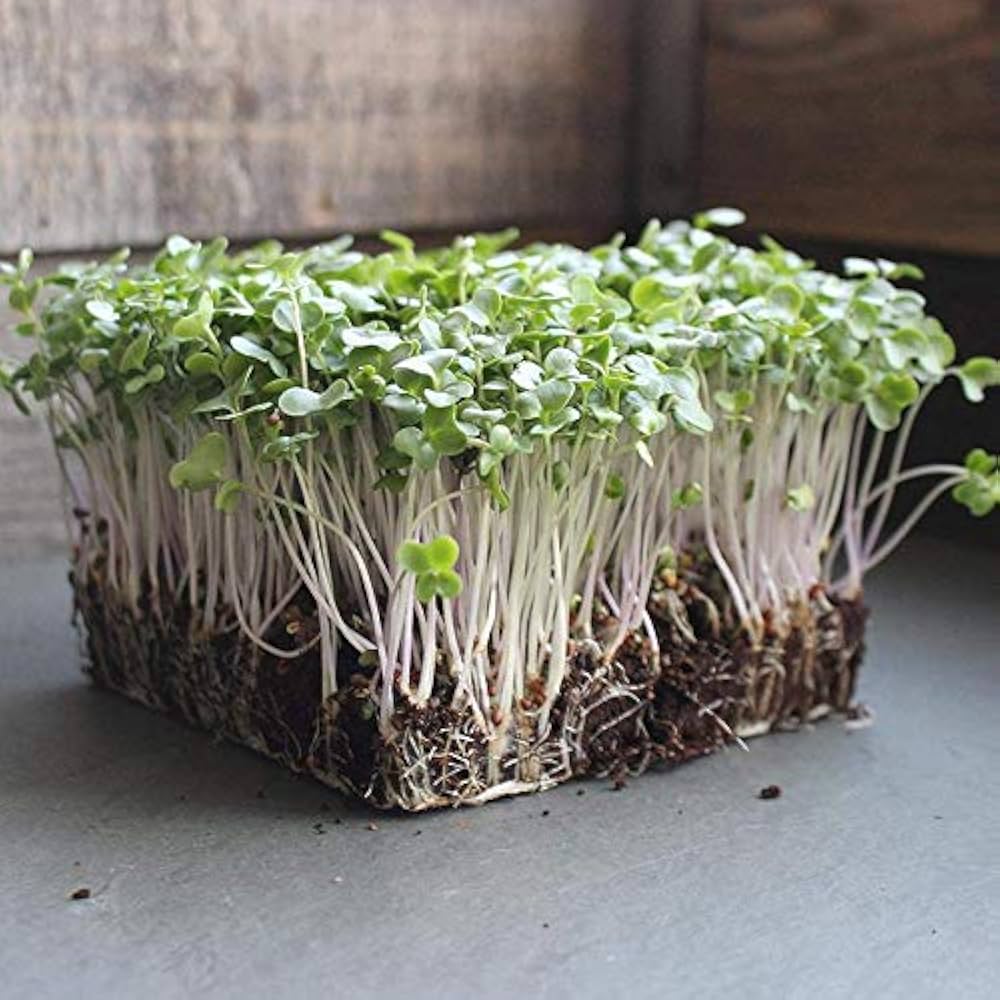
Waltham Broccoli Heirloom Large Cool-Climate Vegetable Seeds
Waltham Broccoli Heirloom Large Cool-Climate Vegetable Seeds
Waltham Broccoli Seeds
Characteristics and Uses of Waltham Broccoli Plants
Waltham Broccoli is a popular and reliable variety known for its large, dark green heads and tender stalks. This non-GMO seed variety is favored by gardeners for its excellent flavor and high yield, making it a staple in vegetable gardens. Waltham Broccoli is versatile in the kitchen, perfect for steaming, roasting, or adding to stir-fries and salads. Its nutritional benefits, including high levels of vitamins C and K, make it a healthy addition to any meal, appealing to both home cooks and health-conscious individuals.
Growing Conditions for Waltham Broccoli Plants
- Soil Type: Prefers well-draining, fertile soil enriched with organic matter.
- pH Level: Thrives in a pH range of 6.0 to 7.0.
- Sunlight: Requires full sun for optimal growth, ideally 6-8 hours per day.
- Temperature: Best suited for cooler temperatures, ideally between 60°F and 70°F.
Planting Tips for Waltham Broccoli
- Seed Depth: Sow seeds ½ inch deep in the soil.
- Spacing: Space plants about 18-24 inches apart to allow for proper growth.
- Timing: Ideal for planting in early spring or late summer for a fall harvest.
Watering Instructions and Tips
- Frequency: Water regularly to keep the soil consistently moist but not waterlogged.
- Amount: Aim for about 1-1.5 inches of water per week, adjusting for rainfall.
- Signs of Need: Look for wilting leaves or dry soil as indicators for watering.
Growing Zones
Waltham Broccoli seeds are suitable for a variety of growing zones, including USDA zones 3-10 and global zones with similar temperate climates. This adaptability allows them to flourish in diverse environments, making them a popular choice for home gardeners.
Key Benefits & Uses
- High Yield: Produces abundant heads, making it a productive choice for gardeners.
- Nutrient-Rich: Packed with vitamins and minerals, contributing to a healthy diet.
- Versatile Use: Great for fresh eating, cooking, and freezing for later use.
Best Uses in the Garden & Landscape
- Vegetable Gardens: A staple crop that adds flavor and nutrition to your garden.
- Companion Planting: Pairs well with other vegetables like carrots and onions, helping to deter pests.
- Container Gardening: Suitable for growing in pots or raised beds, making it accessible for small spaces.
Conclusion
Choosing Waltham Broccoli seeds from Dhara Seeds means investing in a high-quality, non-GMO variety that will bring flavor and nutrition to your garden. With their excellent taste and versatility in the kitchen, these seeds are perfect for gardeners of all levels. Dhara Seeds is a big, trusted name in the seed world, offering a wide range of high-quality, non-GMO varieties to gardeners everywhere.
FAQ
How do I grow Waltham Broccoli seeds?
To grow Waltham Broccoli seeds, prepare a well-draining soil bed, sow seeds ½ inch deep, and ensure they receive full sun. Water regularly to keep the soil moist until the plants are established.
When is the best time to plant Waltham Broccoli seeds?
The best time to plant Waltham Broccoli seeds is in early spring or late summer, allowing for optimal growth in cooler temperatures.
Are Waltham Broccoli plants easy to grow?
Yes, Waltham Broccoli plants are generally easy to grow, requiring minimal maintenance once established. They thrive in cooler conditions and can adapt to various soil types.
Mitsuba Japanese Parsley Seeds
Characteristics and Uses of Mitsuba Japanese Parsley Plants
Mitsuba, also known as Japanese parsley, is a unique herb that features delicate, serrated leaves with a fresh, slightly peppery flavor reminiscent of a blend of parsley, celery, and cilantro. This non-GMO seed variety is highly valued in Japanese cuisine, often used in soups, salads, and as a garnish for various dishes. Mitsuba is not only appreciated for its culinary uses but also for its ornamental appeal, making it a beautiful addition to herb gardens and containers. Its ability to thrive in cooler temperatures makes it a versatile choice for gardeners looking to expand their herb collection.
Growing Conditions for Mitsuba Japanese Parsley Plants
- Soil Type: Prefers well-draining, fertile soil rich in organic matter.
- pH Level: Thrives in a pH range of 6.0 to 7.0.
- Sunlight: Requires partial shade to full sun for optimal growth.
- Temperature: Best suited for cooler temperatures, ideally between 60°F and 75°F.
Planting Tips for Mitsuba Japanese Parsley
- Seed Depth: Sow seeds ¼ inch deep in the soil.
- Spacing: Space plants about 12 inches apart to allow for proper growth.
- Timing: Ideal for planting in early spring or fall, depending on local climate conditions.
Watering Instructions and Tips
- Frequency: Water regularly to keep the soil consistently moist but not soggy.
- Amount: Aim for about 1 inch of water per week, adjusting for rainfall.
- Signs of Need: Look for wilting leaves or dry soil as indicators for watering.
Growing Zones
Mitsuba Japanese Parsley seeds are suitable for a variety of growing zones, including USDA zones 4-9 and global zones with similar temperate climates. This adaptability allows them to flourish in diverse environments, making them a popular choice for herb gardeners.
Key Benefits & Uses
- Rich in Nutrients: Packed with vitamins A and C, as well as antioxidants.
- Culinary Versatility: Enhances a variety of dishes with its unique flavor.
- Attracts Beneficial Insects: Supports pollinators and other beneficial garden insects.
Best Uses in the Garden & Landscape
- Herb Gardens: A staple herb that complements other culinary plants.
- Container Gardening: Ideal for growing in pots or raised beds.
- Companion Planting: Pairs well with vegetables, helping to deter pests.
Conclusion
Choosing Mitsuba Japanese Parsley seeds from Dhara Seeds means investing in a high-quality, non-GMO variety that will enhance your culinary creations and garden biodiversity. With its unique flavor and attractive foliage, this herb is perfect for gardeners of all levels. Dhara Seeds is a big, trusted name in the seed world, offering a wide range of high-quality, non-GMO varieties to gardeners everywhere.
FAQ
How do I grow Mitsuba Japanese Parsley seeds?
To grow Mitsuba Japanese Parsley seeds, prepare a well-draining soil bed, sow seeds ¼ inch deep, and ensure they receive partial shade to full sun. Water regularly to keep the soil moist until the plants are established.
When is the best time to plant Mitsuba Japanese Parsley seeds?
The best time to plant Mitsuba Japanese Parsley seeds is in early spring or fall, allowing for optimal growth in cooler temperatures.
Are Mitsuba Japanese Parsley plants easy to grow?
Yes, Mitsuba Japanese Parsley plants are generally easy to grow, requiring minimal maintenance once established. They thrive in cooler conditions and can adapt to various soil types.
Merlot Lettuce Seeds
Characteristics and Uses of Merlot Lettuce Plants
Merlot Lettuce is a stunning variety known for its deep burgundy leaves and crisp texture, making it a favorite among gardeners and chefs alike. This non-GMO seed variety produces loose-leaf heads that are not only visually appealing but also packed with flavor and nutrients. Merlot Lettuce is versatile in the kitchen, perfect for salads, sandwiches, and garnishes, adding a pop of color and a rich taste to any dish. Its ability to thrive in cooler temperatures makes it an excellent choice for spring and fall planting.
Growing Conditions for Merlot Lettuce Plants
- Soil Type: Prefers well-draining, fertile soil enriched with organic matter.
- pH Level: Thrives in a pH range of 6.0 to 7.0.
- Sunlight: Requires full sun to partial shade for optimal growth.
- Temperature: Best suited for cooler temperatures, ideally between 60°F and 70°F.
Planting Tips for Merlot Lettuce
- Seed Depth: Sow seeds ¼ inch deep in the soil.
- Spacing: Space plants about 10-12 inches apart to allow for proper growth.
- Timing: Ideal for planting in early spring or late summer for a fall harvest.
Watering Instructions and Tips
- Frequency: Water regularly to keep the soil consistently moist but not soggy.
- Amount: Aim for about 1 inch of water per week, adjusting for rainfall.
- Signs of Need: Look for wilting leaves or dry soil as indicators for watering.
Growing Zones
Merlot Lettuce seeds are suitable for a variety of growing zones, including USDA zones 4-9 and global zones with similar temperate climates. This adaptability allows them to flourish in diverse environments, making them a popular choice for home gardeners.
Key Benefits & Uses
- Rich in Nutrients: Packed with vitamins A and K, as well as antioxidants.
- Versatile Use: Great for fresh eating, cooking, and garnishing dishes.
- Fast Growth: Matures quickly, allowing for multiple harvests in a season.
Best Uses in the Garden & Landscape
- Vegetable Gardens: A colorful addition that enhances the visual appeal of your garden.
- Container Gardening: Perfect for growing in pots or raised beds.
- Companion Planting: Pairs well with other vegetables, helping to deter pests.
Conclusion
Choosing Merlot Lettuce seeds from Dhara Seeds means investing in a high-quality, non-GMO variety that will bring flavor and nutrition to your garden. With their vibrant color and crisp texture, these seeds are perfect for gardeners of all levels. Dhara Seeds is a big, trusted name in the seed world, offering a wide range of high-quality, non-GMO varieties to gardeners everywhere.
FAQ
How do I grow Merlot Lettuce seeds?
To grow Merlot Lettuce seeds, prepare a well-draining soil bed, sow seeds ¼ inch deep, and ensure they receive full sun to partial shade. Water regularly to keep the soil moist until the plants are established.
When is the best time to plant Merlot Lettuce seeds?
The best time to plant Merlot Lettuce seeds is in early spring or late summer, allowing for optimal growth in cooler temperatures.
Are Merlot Lettuce plants easy to grow?
Yes, Merlot Lettuce plants are generally easy to grow, requiring minimal maintenance once established. They thrive in cooler conditions and can adapt to various soil types.

Isis Candy Tomato Bi-Color Heirloom Vegetable Seeds
Isis Candy Tomato Bi-Color Heirloom Vegetable Seeds
Isis Candy Tomato Seeds
Characteristics and Uses of Isis Candy Tomato Plants
Isis Candy Tomatoes are a delightful heirloom variety known for their small, sweet, and juicy fruits that are typically yellow with red swirls. This non-GMO seed variety is highly sought after for its exceptional flavor and unique appearance, making it a favorite among gardeners and chefs alike. These tomatoes are perfect for fresh eating, salads, and garnishes, adding a burst of color and sweetness to any dish. Their compact growth habit makes them suitable for container gardening, allowing you to enjoy homegrown tomatoes even in limited spaces.
Growing Conditions for Isis Candy Tomato Plants
- Soil Type: Prefers well-draining, fertile soil enriched with organic matter.
- pH Level: Thrives in a pH range of 6.0 to 6.8.
- Sunlight: Requires full sun for optimal growth and fruit production.
- Temperature: Best suited for warm temperatures, ideally between 70°F and 85°F.
Planting Tips for Isis Candy Tomato
- Seed Depth: Sow seeds ¼ inch deep in the soil.
- Spacing: Space plants about 18-24 inches apart to allow for proper air circulation.
- Timing: Ideal for planting indoors 6-8 weeks before the last frost date or directly outdoors after the danger of frost has passed.
Watering Instructions and Tips
- Frequency: Water regularly to keep the soil consistently moist but not waterlogged.
- Amount: Aim for about 1-2 inches of water per week, adjusting for rainfall.
- Signs of Need: Look for wilting leaves or dry soil as indicators for watering.
Growing Zones
Isis Candy Tomato seeds are suitable for a variety of growing zones, including USDA zones 3-10 and global zones with similar temperate climates. This adaptability allows them to flourish in diverse environments, making them a popular choice for home gardeners.
Key Benefits & Uses
- Exceptional Flavor: Known for their sweet and juicy taste, perfect for fresh eating.
- Attractive Appearance: The unique yellow and red swirls make them visually appealing.
- Versatile Use: Ideal for salads, salsas, and garnishes, enhancing various dishes.
Best Uses in the Garden & Landscape
- Vegetable Gardens: A colorful and flavorful addition to your vegetable patch.
- Container Gardening: Perfect for growing in pots or small spaces.
- Companion Planting: Pairs well with basil and peppers, helping to deter pests.
Conclusion
Choosing Isis Candy Tomato seeds from Dhara Seeds means investing in a high-quality, non-GMO variety that will bring flavor and beauty to your garden. With their unique appearance and exceptional taste, these tomatoes are perfect for gardeners of all levels. Dhara Seeds is a big, trusted name in the seed world, offering a wide range of high-quality, non-GMO varieties to gardeners everywhere.
FAQ
How do I grow Isis Candy Tomato seeds?
To grow Isis Candy Tomato seeds, prepare a well-draining soil bed, sow seeds ¼ inch deep, and ensure they receive full sun. Water regularly to keep the soil moist until the plants are established.
When is the best time to plant Isis Candy Tomato seeds?
The best time to plant Isis Candy Tomato seeds is indoors 6-8 weeks before the last frost date or directly outdoors after the danger of frost has passed. This timing allows for optimal germination and growth.
Are Isis Candy Tomatoes easy to grow?
Yes, Isis Candy Tomatoes are generally easy to grow, requiring minimal maintenance once established. They thrive in warm conditions and can adapt to various soil types.
Hamburg Rooted Parsley Seeds
Characteristics and Uses of Hamburg Rooted Parsley Plants
Hamburg Rooted Parsley is a unique and flavorful variety known for its large, edible roots and dark green leaves. This non-GMO seed variety is prized for its rich, earthy taste and versatility in the kitchen, making it a favorite among chefs and home cooks alike. Hamburg Rooted Parsley is not only used as a fresh herb but also as a root vegetable, adding depth to soups, stews, and salads. Its ability to thrive in cooler temperatures makes it an excellent choice for spring and fall planting.
Growing Conditions for Hamburg Rooted Parsley Plants
- Soil Type: Prefers well-draining, fertile soil rich in organic matter.
- pH Level: Thrives in a pH range of 6.0 to 7.0.
- Sunlight: Requires full sun to partial shade for optimal growth.
- Temperature: Best suited for cooler temperatures, ideally between 60°F and 70°F.
Planting Tips for Hamburg Rooted Parsley
- Seed Depth: Sow seeds ¼ inch deep in the soil.
- Spacing: Space plants about 12 inches apart to allow for proper growth.
- Timing: Ideal for planting in early spring or late summer for a fall harvest.
Watering Instructions and Tips
- Frequency: Water regularly to keep the soil consistently moist but not soggy.
- Amount: Aim for about 1 inch of water per week, adjusting for rainfall.
- Signs of Need: Look for wilting leaves or dry soil as indicators for watering.
Growing Zones
Hamburg Rooted Parsley seeds are suitable for a variety of growing zones, including USDA zones 4-9 and global zones with similar temperate climates. This adaptability allows them to flourish in diverse environments, making them a popular choice for home gardeners.
Key Benefits & Uses
- Rich in Nutrients: Packed with vitamins A, C, and K, as well as antioxidants.
- Versatile Use: Great for fresh eating, cooking, and as a root vegetable.
- Attracts Beneficial Insects: Supports pollinators and other beneficial garden insects.
Best Uses in the Garden & Landscape
- Herb Gardens: A staple herb that complements other culinary plants.
- Container Gardening: Ideal for growing in pots or raised beds.
- Companion Planting: Pairs well with vegetables, helping to deter pests.
Conclusion
Choosing Hamburg Rooted Parsley seeds from Dhara Seeds means investing in a high-quality, non-GMO variety that will bring flavor and nutrition to your garden. With their rich taste and versatility in the kitchen, these seeds are perfect for gardeners of all levels. Dhara Seeds is a big, trusted name in the seed world, offering a wide range of high-quality, non-GMO varieties to gardeners everywhere.
FAQ
How do I grow Hamburg Rooted Parsley seeds?
To grow Hamburg Rooted Parsley seeds, prepare a well-draining soil bed, sow seeds ¼ inch deep, and ensure they receive full sun to partial shade. Water regularly to keep the soil moist until the plants are established.
When is the best time to plant Hamburg Rooted Parsley seeds?
The best time to plant Hamburg Rooted Parsley seeds is in early spring or late summer, allowing for optimal growth in cooler temperatures.
Are Hamburg Rooted Parsley plants easy to grow?
Yes, Hamburg Rooted Parsley plants are generally easy to grow, requiring minimal maintenance once established. They thrive in cooler conditions and can adapt to various soil types.
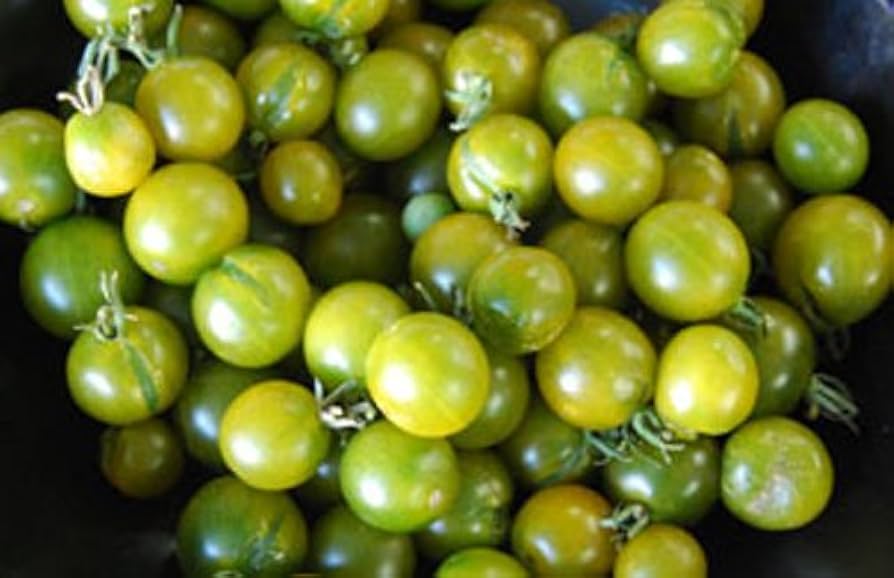
Green Grape Tomato Heirloom Fruiting Vegetable Seeds
Green Grape Tomato Heirloom Fruiting Vegetable Seeds
Green Grape Tomato Seeds
Characteristics and Uses of Green Grape Tomato Plants
Green Grape Tomatoes are a delightful variety known for their small, round shape and vibrant green color, which remains even when fully ripe. This non-GMO seed variety is celebrated for its sweet, tangy flavor and juicy texture, making it a favorite for snacking, salads, and garnishes. Their unique appearance adds visual interest to any dish, while their rich taste enhances a variety of culinary creations. Green Grape Tomatoes are also great for container gardening, allowing you to enjoy fresh produce even in limited spaces.
Growing Conditions for Green Grape Tomato Plants
- Soil Type: Prefers well-draining, fertile soil enriched with organic matter.
- pH Level: Thrives in a pH range of 6.0 to 6.8.
- Sunlight: Requires full sun for optimal growth and fruit production.
- Temperature: Best suited for warm temperatures, ideally between 70°F and 85°F.
Planting Tips for Green Grape Tomato
- Seed Depth: Sow seeds ¼ inch deep in the soil.
- Spacing: Space plants about 18-24 inches apart to allow for proper air circulation.
- Timing: Ideal for planting indoors 6-8 weeks before the last frost date or directly outdoors after the danger of frost has passed.
Watering Instructions and Tips
- Frequency: Water regularly to keep the soil consistently moist but not waterlogged.
- Amount: Aim for about 1-2 inches of water per week, adjusting for rainfall.
- Signs of Need: Look for wilting leaves or dry soil as indicators for watering.
Growing Zones
Green Grape Tomato seeds are suitable for a variety of growing zones, including USDA zones 3-10 and global zones with similar temperate climates. This adaptability allows them to flourish in diverse environments, making them a popular choice for home gardeners.
Key Benefits & Uses
- Unique Flavor: Known for their sweet and tangy taste, perfect for fresh eating.
- Attractive Appearance: The vibrant green color adds visual appeal to dishes.
- Versatile Use: Ideal for salads, salsas, and as a healthy snack.
Best Uses in the Garden & Landscape
- Vegetable Gardens: A colorful and flavorful addition to your vegetable patch.
- Container Gardening: Perfect for patios, balconies, and small spaces.
- Companion Planting: Pairs well with basil and peppers, helping to deter pests.
Conclusion
Choosing Green Grape Tomato seeds from Dhara Seeds means investing in a high-quality, non-GMO variety that will bring flavor and beauty to your garden. With their unique appearance and exceptional taste, these tomatoes are perfect for gardeners of all levels. Dhara Seeds is a big, trusted name in the seed world, offering a wide range of high-quality, non-GMO varieties to gardeners everywhere.
FAQ
How do I grow Green Grape Tomato seeds?
To grow Green Grape Tomato seeds, prepare a well-draining soil bed, sow seeds ¼ inch deep, and ensure they receive full sun. Water regularly to keep the soil moist until the plants are established.
When is the best time to plant Green Grape Tomato seeds?
The best time to plant Green Grape Tomato seeds is indoors 6-8 weeks before the last frost date or directly outdoors after the danger of frost has passed. This timing allows for optimal germination and growth.
Are Green Grape Tomatoes easy to grow?
Yes, Green Grape Tomatoes are generally easy to grow, requiring minimal maintenance once established. They thrive in warm conditions and can adapt to various soil types.
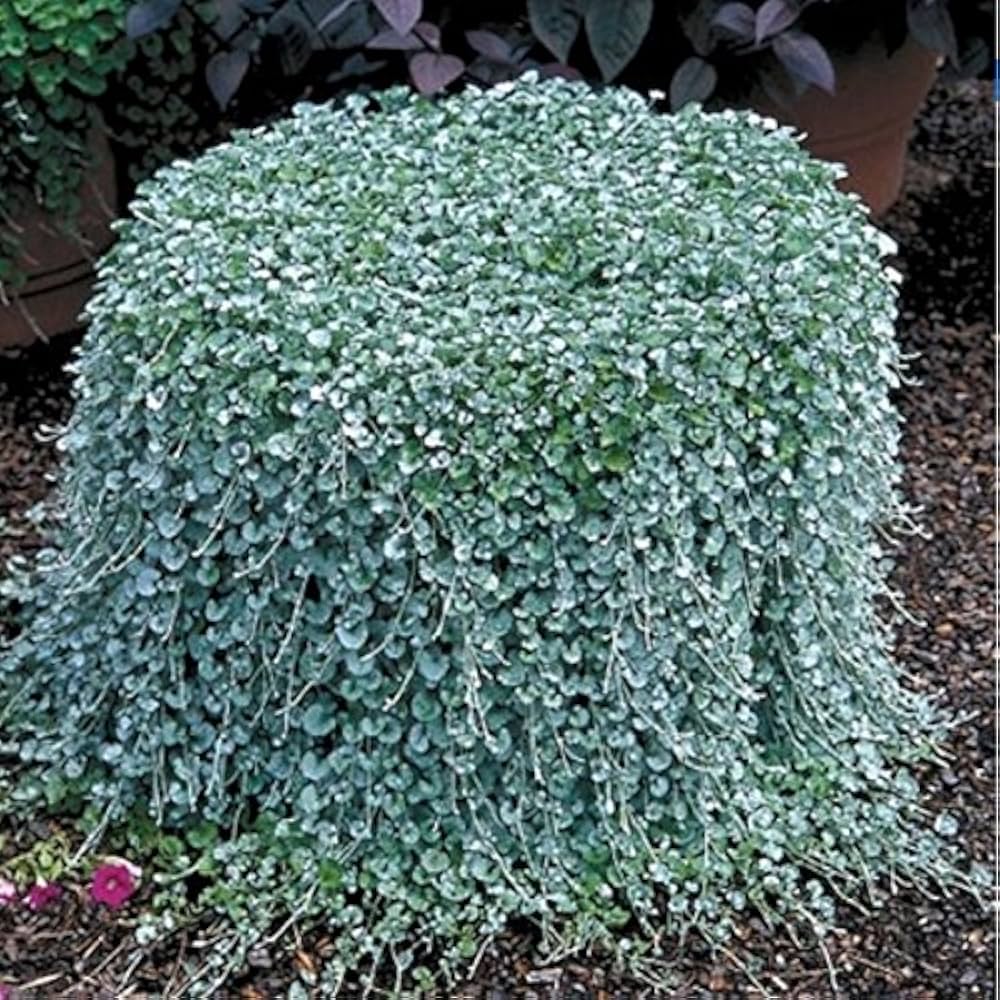
Dichondra Repens Ground Cover Ornamental Plant Seeds
Dichondra Repens Ground Cover Ornamental Plant Seeds
Dichondra Repens Seeds
Characteristics and Uses of Dichondra Repens Plants
Dichondra Repens, commonly known as kidney weed or lawn dichondra, is a low-growing perennial ground cover that features small, round leaves and a lush green appearance. This non-GMO seed variety is ideal for creating a dense, carpet-like lawn alternative that thrives in a variety of conditions. Its ability to tolerate foot traffic makes it a popular choice for residential lawns, parks, and commercial landscapes. Additionally, Dichondra Repens is drought-tolerant, making it an excellent option for eco-friendly gardening and landscaping.
Growing Conditions for Dichondra Repens Plants
- Soil Type: Prefers well-draining, fertile soil with good organic content.
- pH Level: Thrives in a pH range of 6.0 to 7.5.
- Sunlight: Requires full sun to partial shade for optimal growth.
- Temperature: Best suited for moderate temperatures, ideally between 60°F and 80°F.
Planting Tips for Dichondra Repens
- Seed Depth: Sow seeds ¼ inch deep in the soil.
- Spacing: Space seeds about 12 inches apart to allow for proper growth.
- Timing: Ideal for planting in spring or early fall when temperatures are mild.
Watering Instructions and Tips
- Frequency: Water regularly to keep the soil consistently moist but not soggy.
- Amount: Aim for about 1 inch of water per week, adjusting for rainfall.
- Signs of Need: Look for wilting leaves or dry soil as indicators for watering.
Growing Zones
Dichondra Repens seeds are suitable for a variety of growing zones, including USDA zones 7-10 and global zones with similar temperate climates. This adaptability allows them to flourish in diverse environments, making them a popular choice for gardeners looking to enhance their outdoor spaces.
Key Benefits & Uses
- Low Maintenance: Requires minimal care once established, making it ideal for busy gardeners.
- Drought Tolerant: Thrives in dry conditions, reducing the need for frequent watering.
- Attractive Ground Cover: Provides a lush, green appearance that enhances the visual appeal of any garden.
Best Uses in the Garden & Landscape
- Ground Cover: Perfect for filling in bare spots and preventing soil erosion.
- Lawns: Serves as a low-maintenance alternative to traditional grass lawns.
- Container Gardening: Ideal for pots and hanging baskets, adding greenery to patios and balconies.
Conclusion
Choosing Dichondra Repens seeds from Dhara Seeds means investing in a high-quality, non-GMO variety that will bring beauty and functionality to your garden. With its lush appearance and low maintenance requirements, this ground cover is perfect for gardeners of all levels. Dhara Seeds is a big, trusted name in the seed world, offering a wide range of high-quality, non-GMO varieties to gardeners everywhere.
FAQ
How do I grow Dichondra Repens seeds?
To grow Dichondra Repens seeds, prepare a well-draining soil bed, sow seeds ¼ inch deep, and ensure they receive full sun to partial shade. Water regularly to keep the soil moist until the plants are established.
When is the best time to plant Dichondra Repens seeds?
The best time to plant Dichondra Repens seeds is in spring or early fall, allowing for optimal growth in mild temperatures.
Are Dichondra Repens plants easy to grow?
Yes, Dichondra Repens plants are generally easy to grow, requiring minimal maintenance once established. They thrive in various conditions and can adapt to different soil types.





